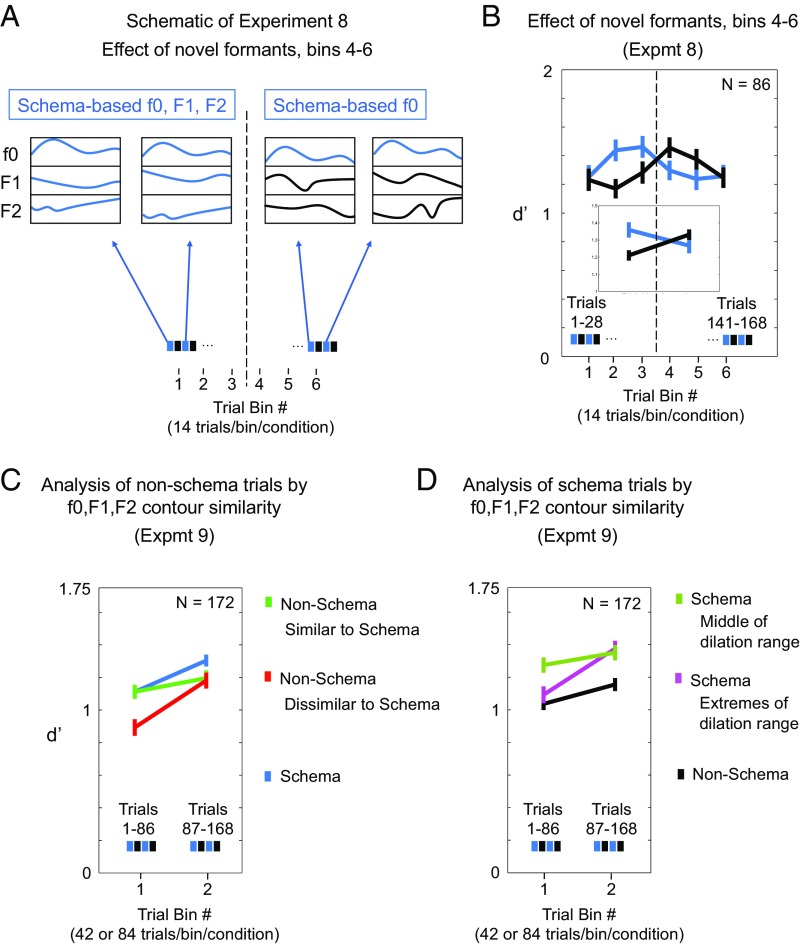Fig. 4.
Dependence of schema benefit on multiple dimensions and similarity to the schema. (A) Schematic of the structure of experiment 8. On each trial, listeners were cued to a target voice, heard a target-distractor voice pair, and judged if a subsequent probe was from the end of the target or the distractor (paradigm 2). Schema-based trials alternated with non–schema-based trials, but the formant trajectories on schema-based trials were randomized halfway through the experiment. (B) Results of experiment 8: effect of multiple dimensions on schema learning (n = 86). The Inset denotes results with trials binned into 42 trials per condition to maximize power. Error bars throughout this figure denote the SEM. (C) Results of subdividing non-schema trials from experiment 9 (n = 146). Performance was computed separately for non-schema trials whose feature trajectories were most and least correlated with those of the schema. (D) Results of subdividing schema trials from experiment 9. Performance was computed separately for schema trials in the middle and extremes of the dilation/transposition range.

